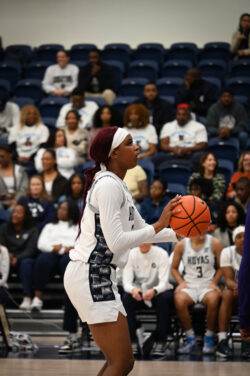Not even my customary run-in with the ceiling could deter my good cheer last Saturday morning as I climbed out of bed. The sun glistening upon the muddy Potomac, the delicate snoring of my roommate and the intermittent shouting from kegs-and-eggs revelers; everything smacked of the collegiate bliss that Homecoming weekend is meant to invoke.
On my way to breakfast, I dreamed of the autumnal bounty of late-September brunch—until I was rudely awakened by the cornea-scorching red of the Cornell Club Alumni tent pitched directly in front of Leo’s. The Cornellians were out in full Ivy League force—Dockers and Polos with the occasional fanny pack—though to their credit, no one wore an ‘Ithaca is Gorges’ t-shirt.
Entering the dining hall, my charity melted further away as pudgy middle-aged men edged by me, eager to enter the top floor of Leo’s. I quickly realized that the room normally reserved for the nuptial feasts of former Hoyas had been transformed into a red-and-white delight at the behest of the Cornell’s alums. All this on our Homcoming weekend. And they brought the marching band.
Hilltop alumni flock to campus one weekend a year to relive their glory days, walking the hallowed halls once more, getting sloppy-drunk at Tombs and hitting on co-eds. This is all fine and dandy, but why don’t geriatric Georgetown alums rent out Leo’s before football games?
It is no secret that Georgetown has financial troubles. We are the institutional equivalent of that eccentrically dignified uncle, who, though his cravat and smoking jacket are slightly tattered, can still prattle on about Proust and Panamanian exports in a most convincing fashion. When it comes to projects that the University community cares about, like, let’s say, improving the football program, the sad reality is that the school’s budget does not allow for adequate financial support. This is where all those wealthy alums I’ve been hearing about (ahem, Mr. Eric Trump) should step in.
Remember Holy Cross? They’re our Jesuit partners in Christ (referred to in some circles as “J.V. Georgetown”) that beat the Hoyas 55-0 a few weeks ago. Their fundraising, however, has reached varsity status.
In the fall of 2003, Crusader alumni took it upon themselves to improve the state of their underachieving football program. Enthusiastic football alums banded together to form the Crusader Gridiron Club, which, according to the group’s website, uses donations for assistant coaching salaries, equipment, travel expenses, recruiting budget, computer and video systems as well as the financial aid budget. The fundraising program has been so successful that Holy Cross created the Crusader Athletic Fund in 2006 to help out all of the school’s 27 athletic teams through alumni gifts.
Tom Cadigan, Holy Cross’s Associate Director of Annual Athletics Giving, called the success of the Gridiron program “tremendous,” pointing to numbers that show the club raised over $200,000 last year from 330 donors. The statistic is all the more impressive when you learn that in the previous year, the Gridiron club had only 170 donors.
Georgetown football has a Gridiron Club too, whose website, along with an article entitled “A September to Forget,” boasts that the club raised $272,974 from 275 donors during the 2005-2006 school year. Hoya alums may have raised more money but the where is it all going? Holy Cross clearly delineates where all its funds are allocated and is obviously making better use of its donations; just compare the two schools’ records.
Holy Cross is an undergraduate institution only, whose enrollment falls somewhere around 2,800 students. Georgetown’s undergraduate enrollment for 2006-2007 was 6,853. This means that a school about a third of our size has managed to mobilize a significantly greater proportion of their alumni to take an active role in improving their school in a very visible way. With Georgetown’s prestigious international reputation and legions of upwardly-mobile, motivated graduates, there’s no way that small regional schools like Holy Cross should be out-hustling us both on the field and at the bank.
Georgetown alumni need to take pride in their school in ways outside of perusing the quarterly magazine when it come in the mail. As the kids are saying these days, money makes the world go ‘round, so let’s get more.




